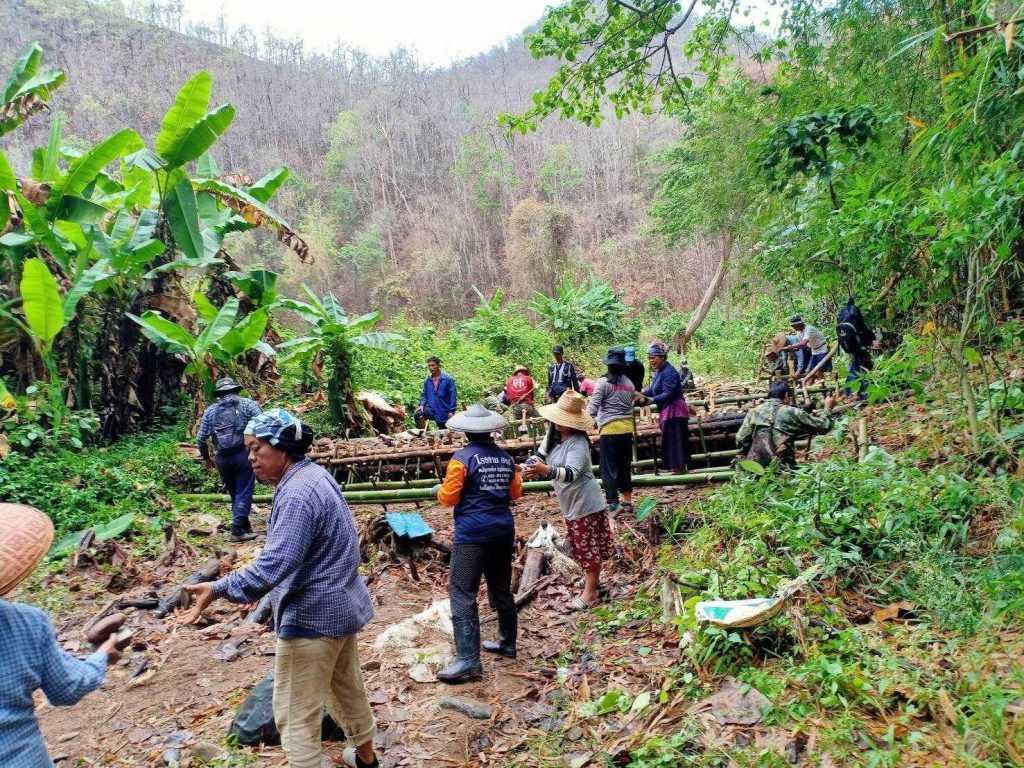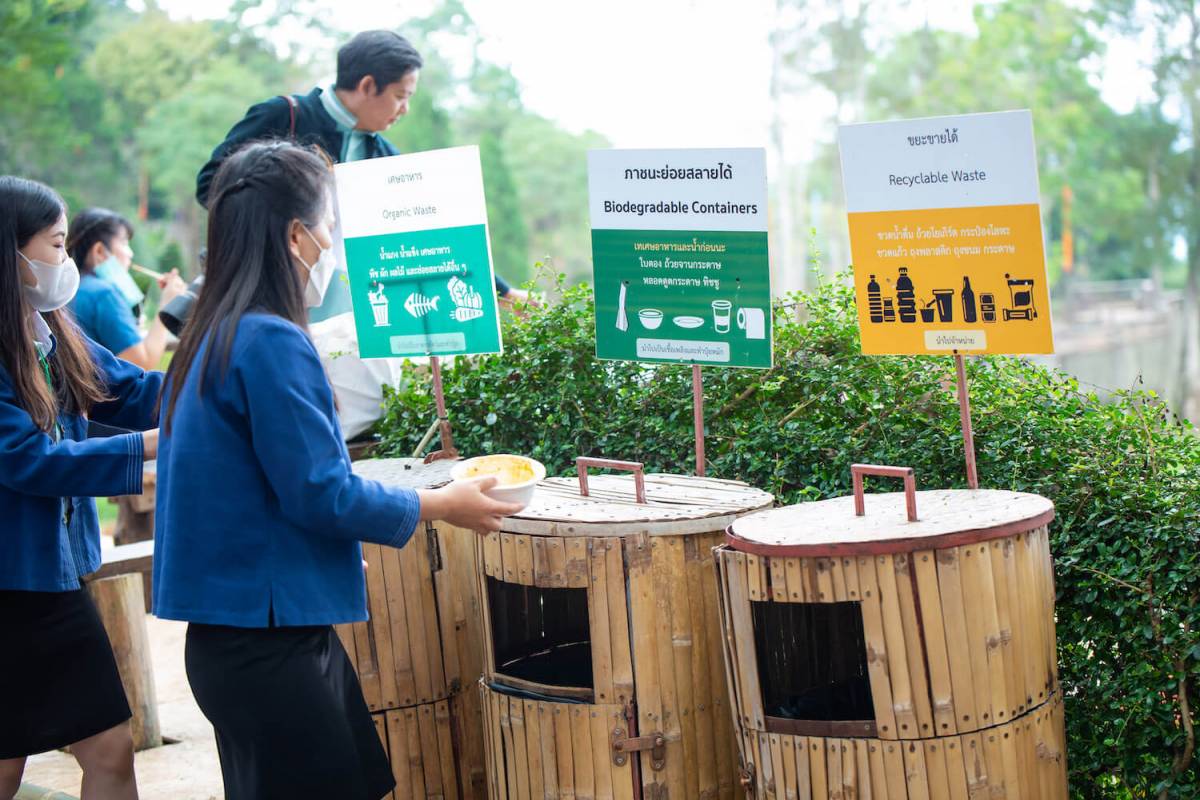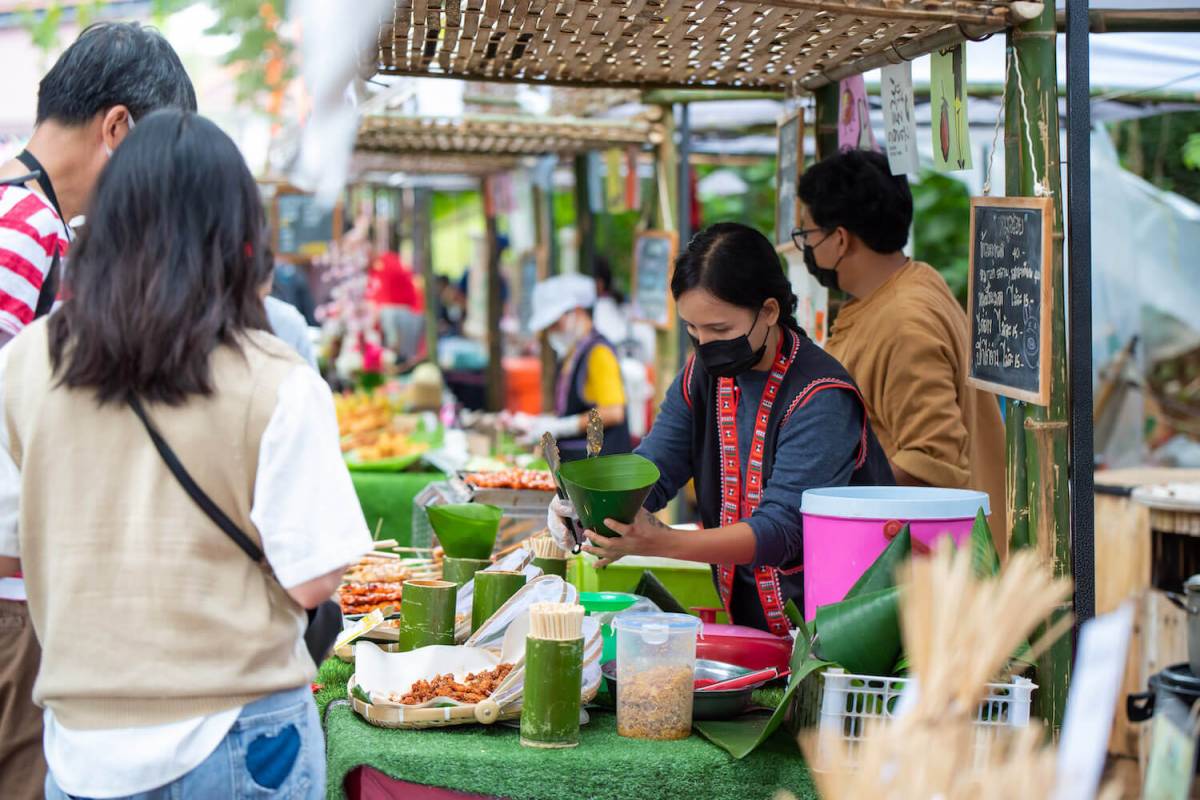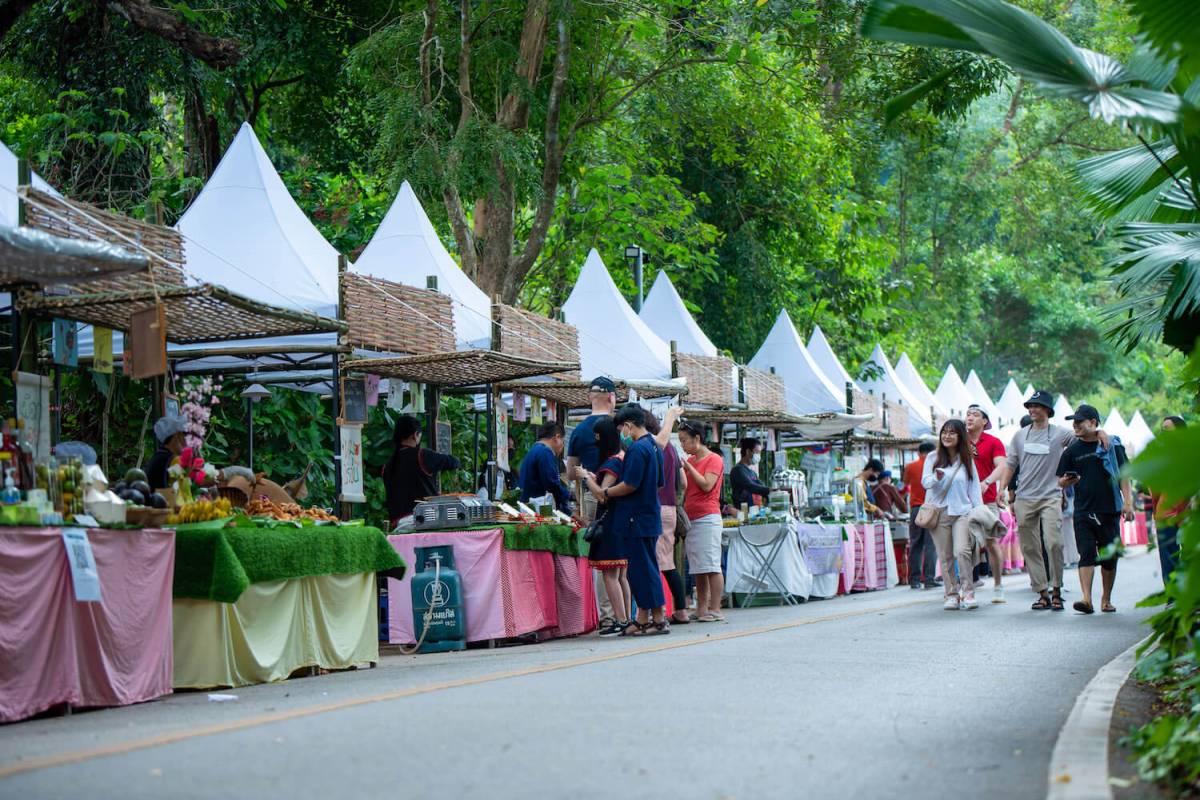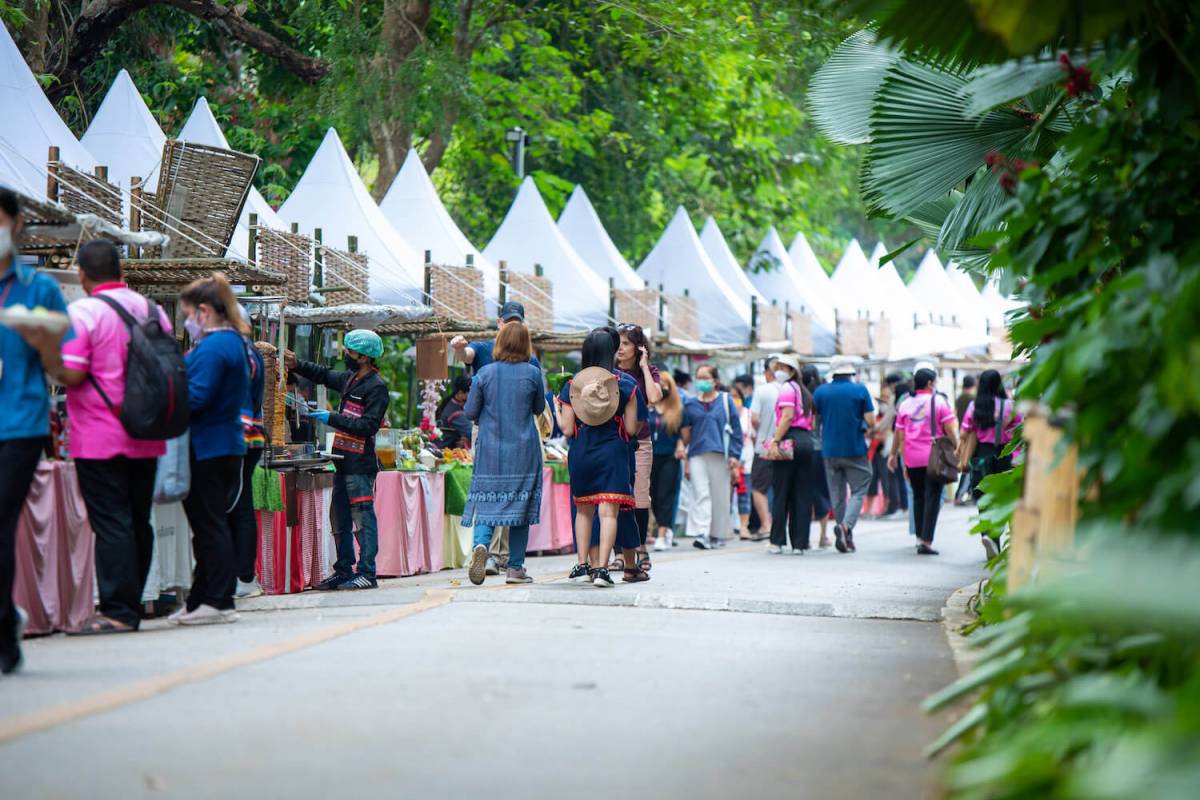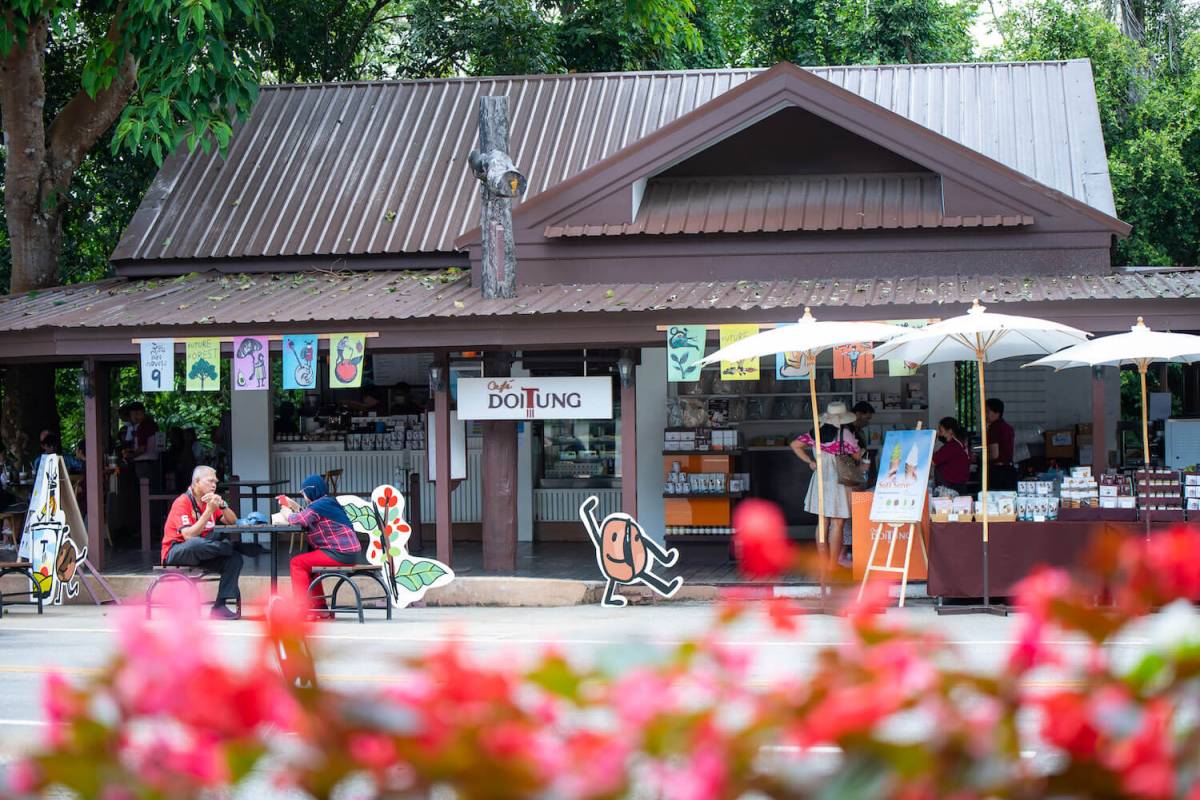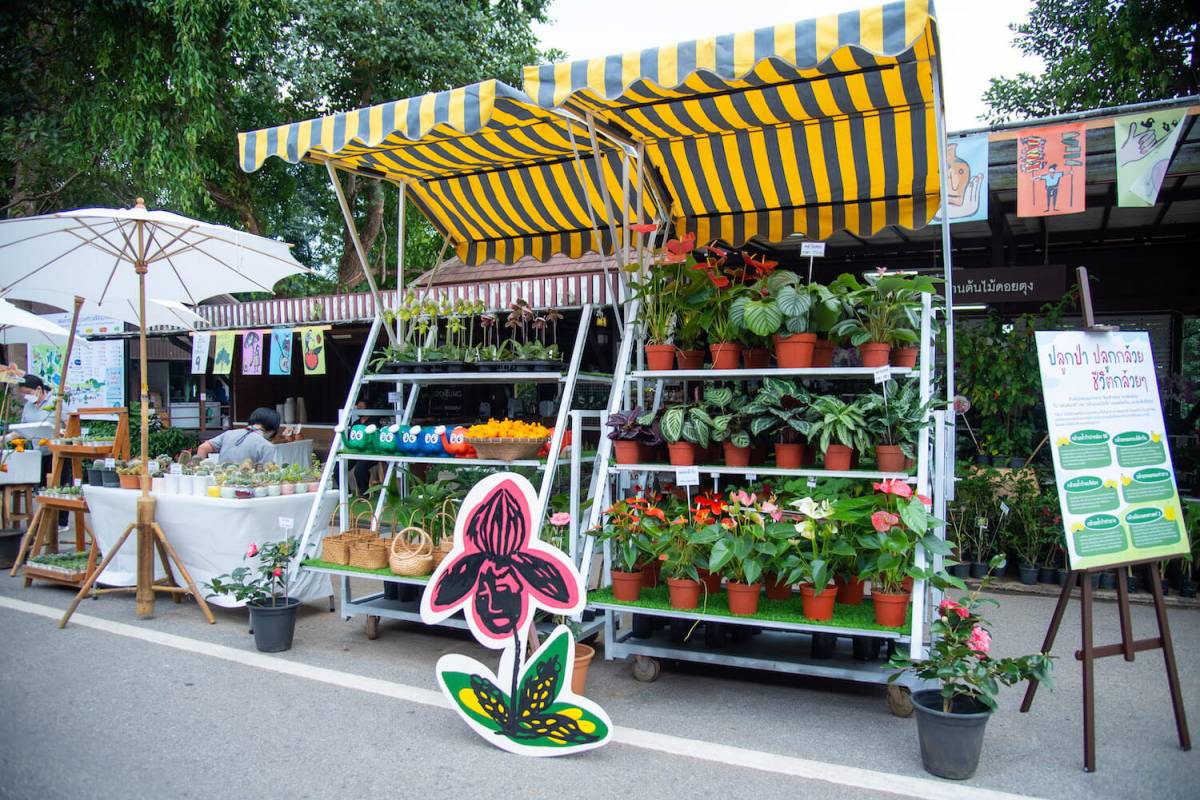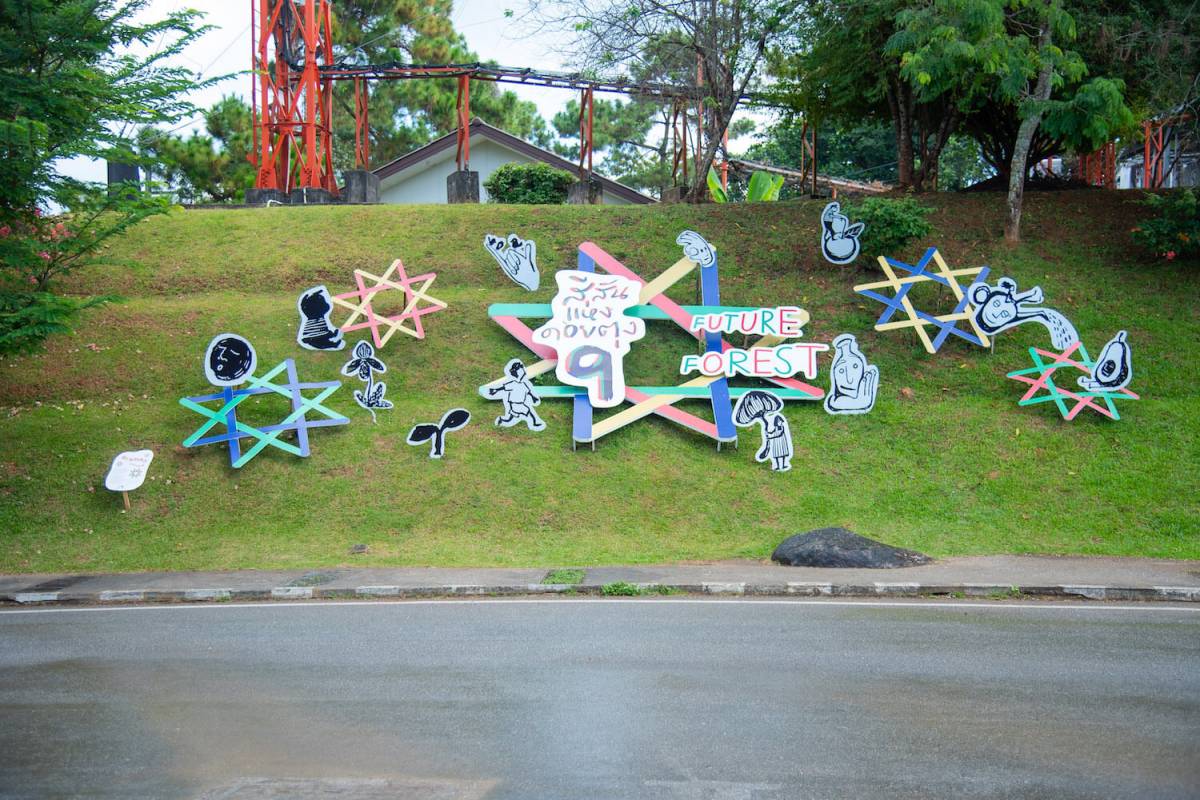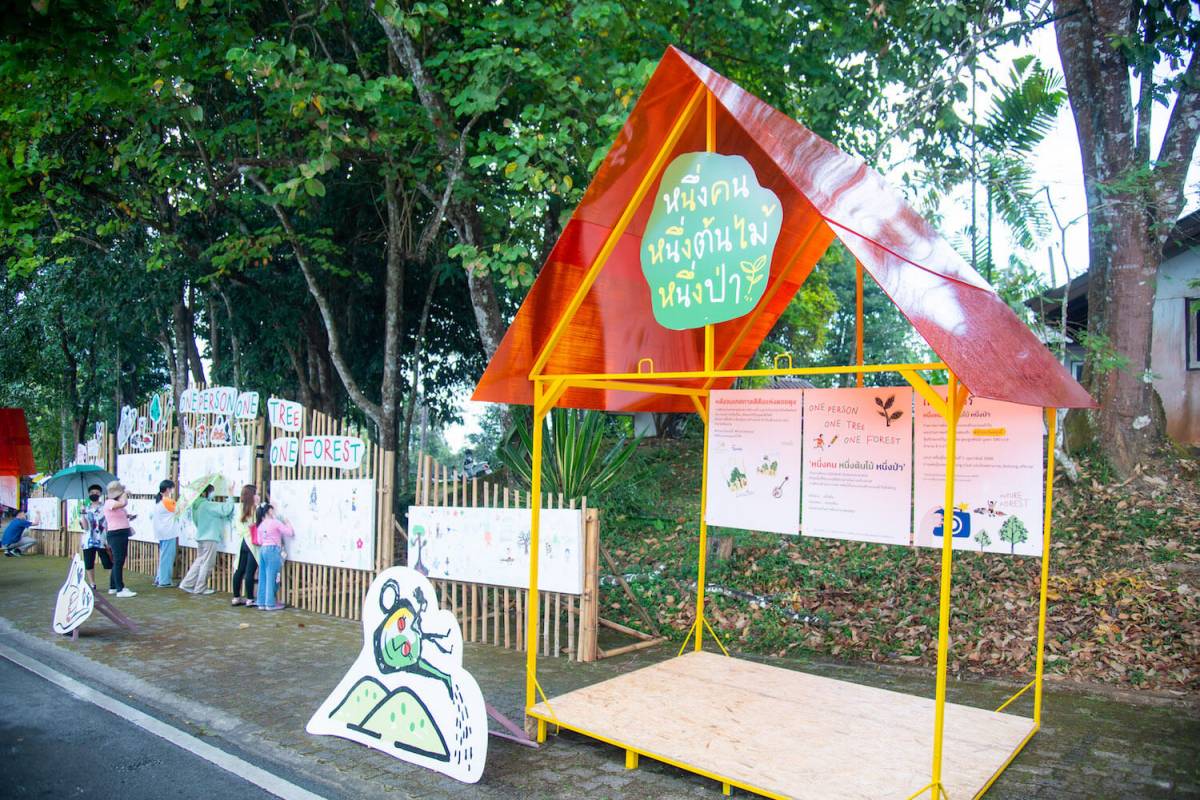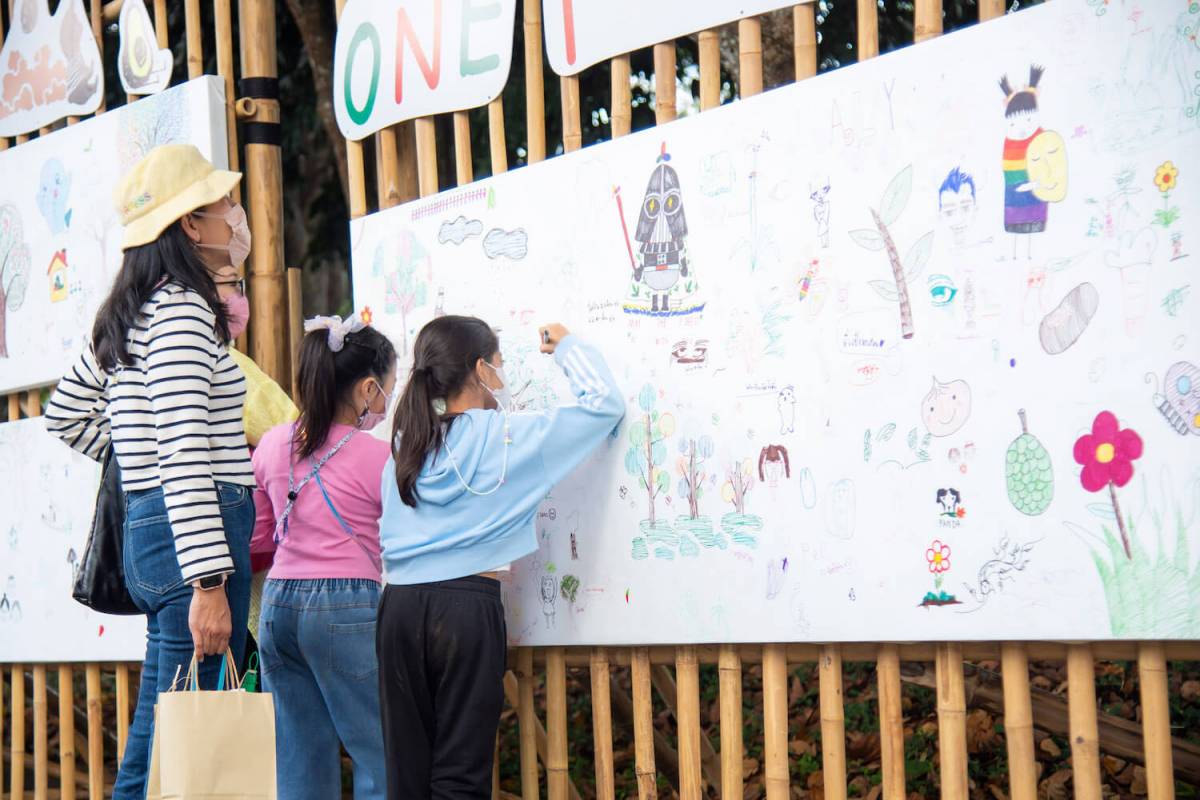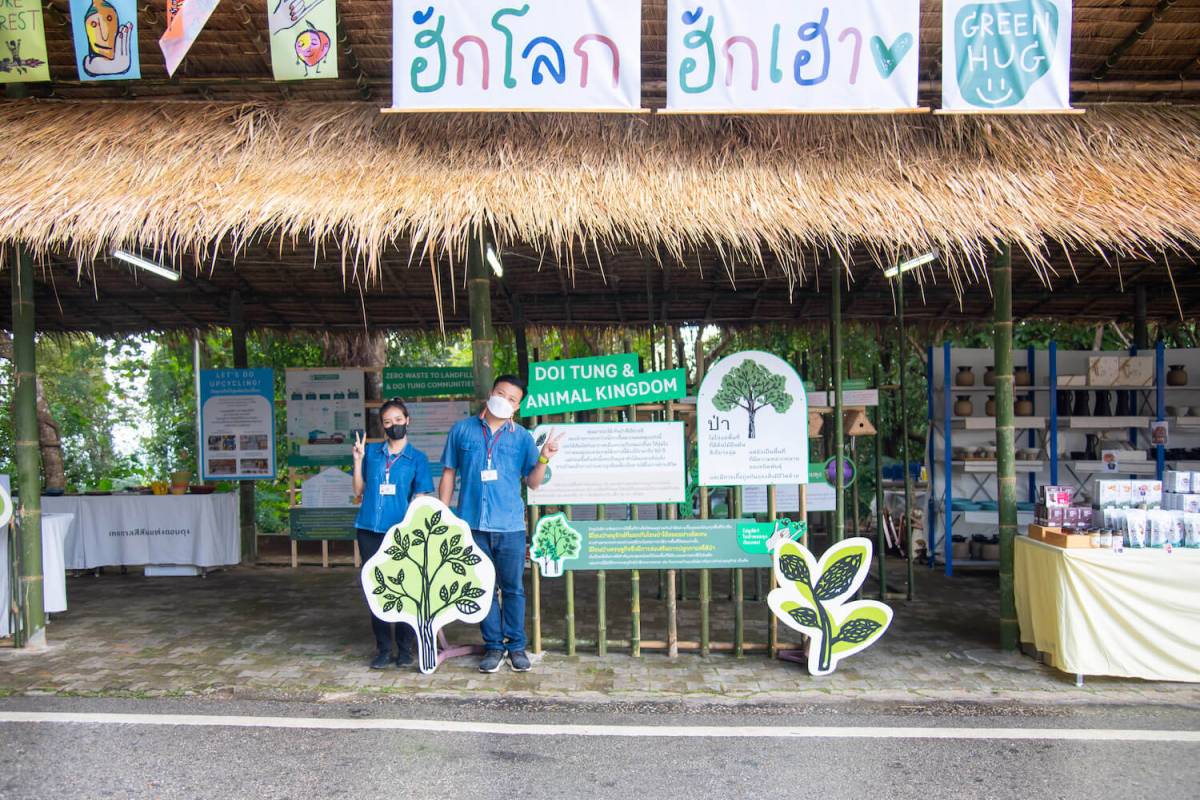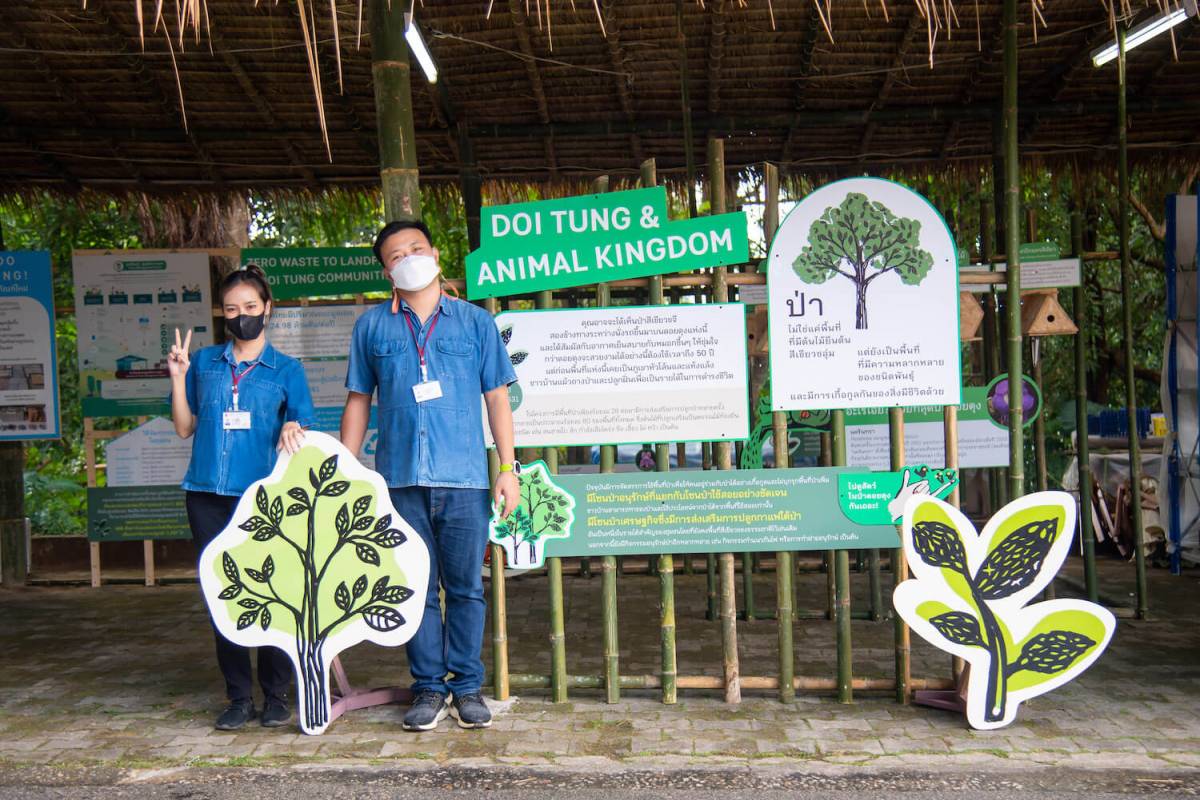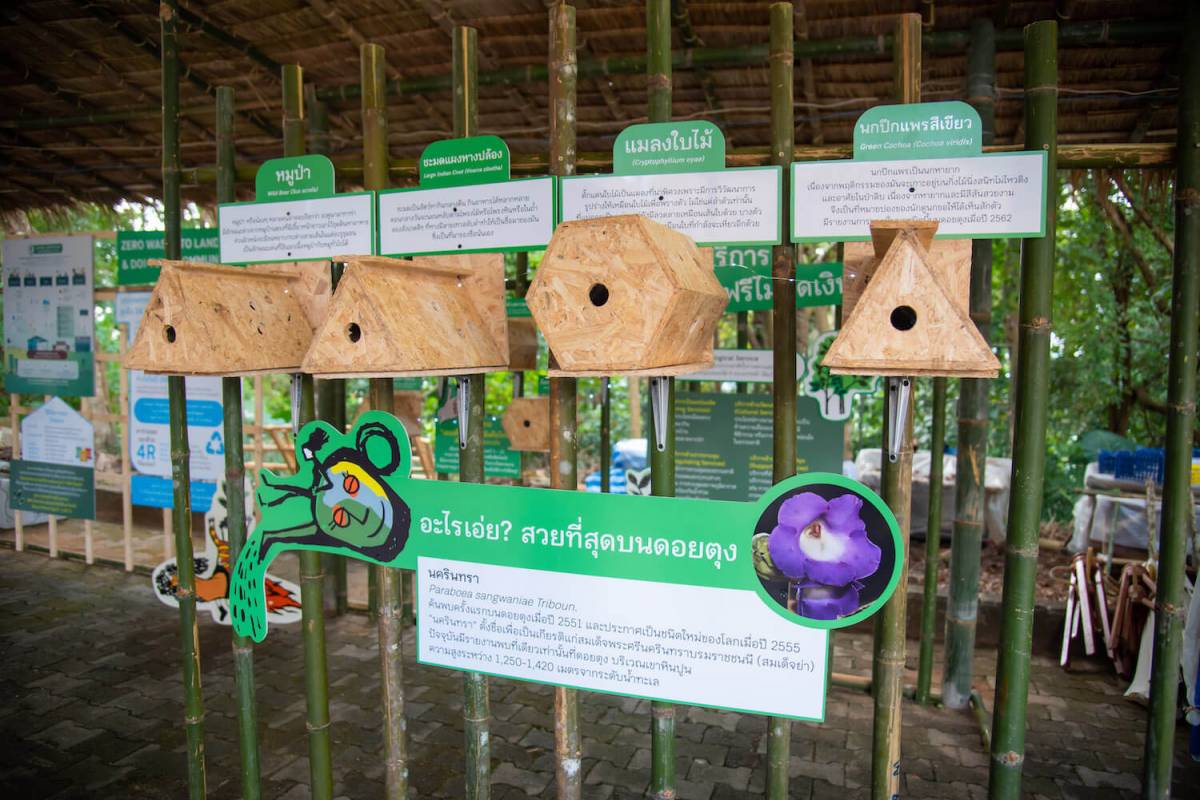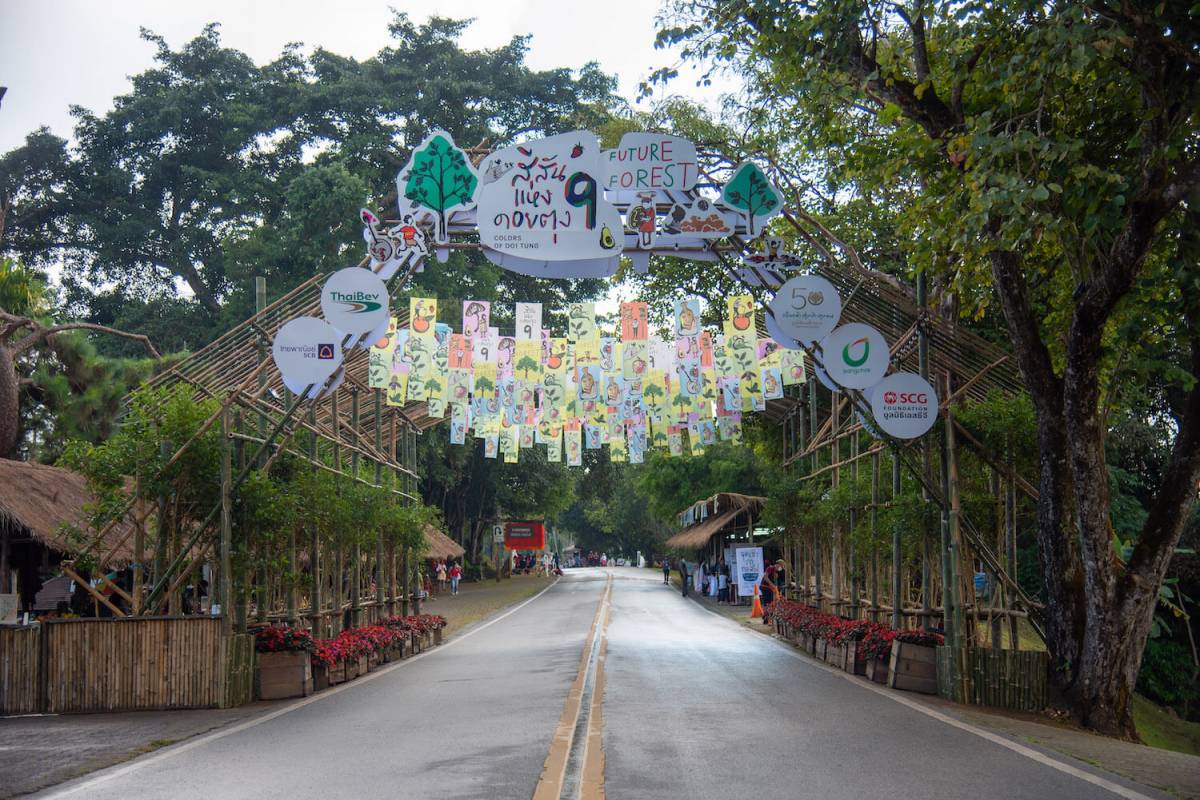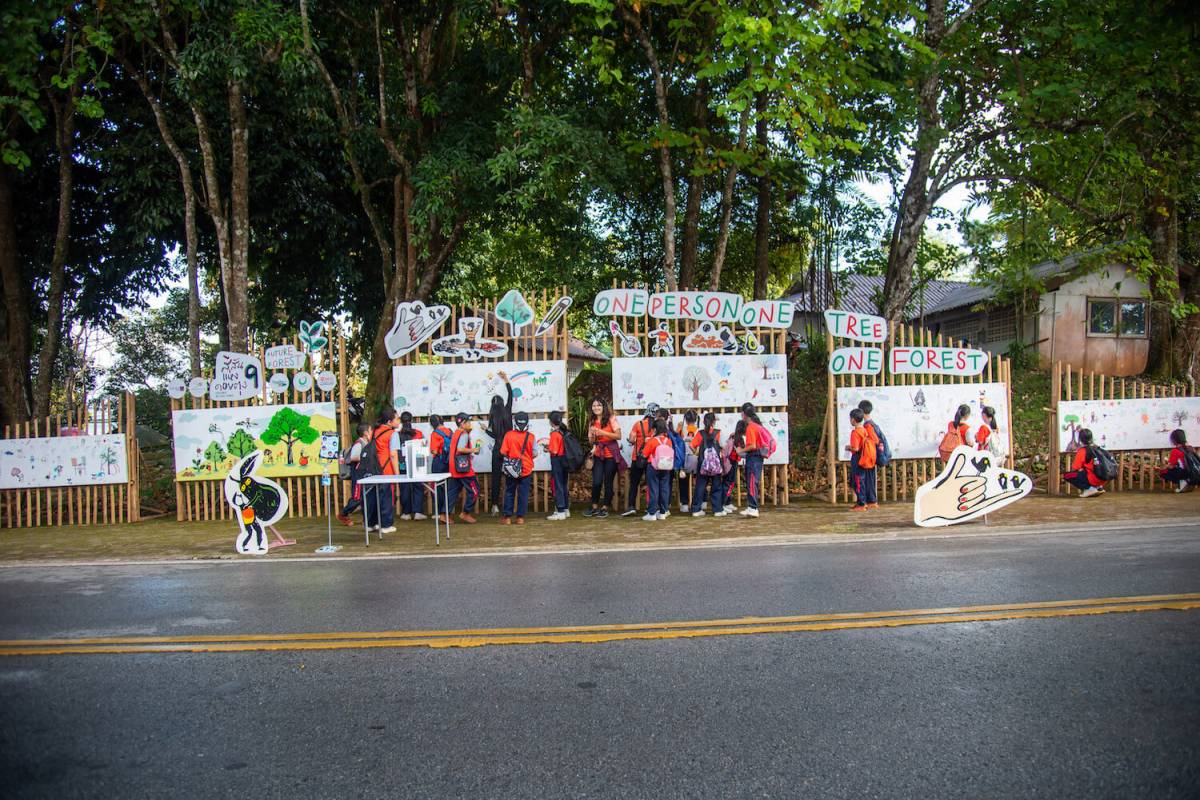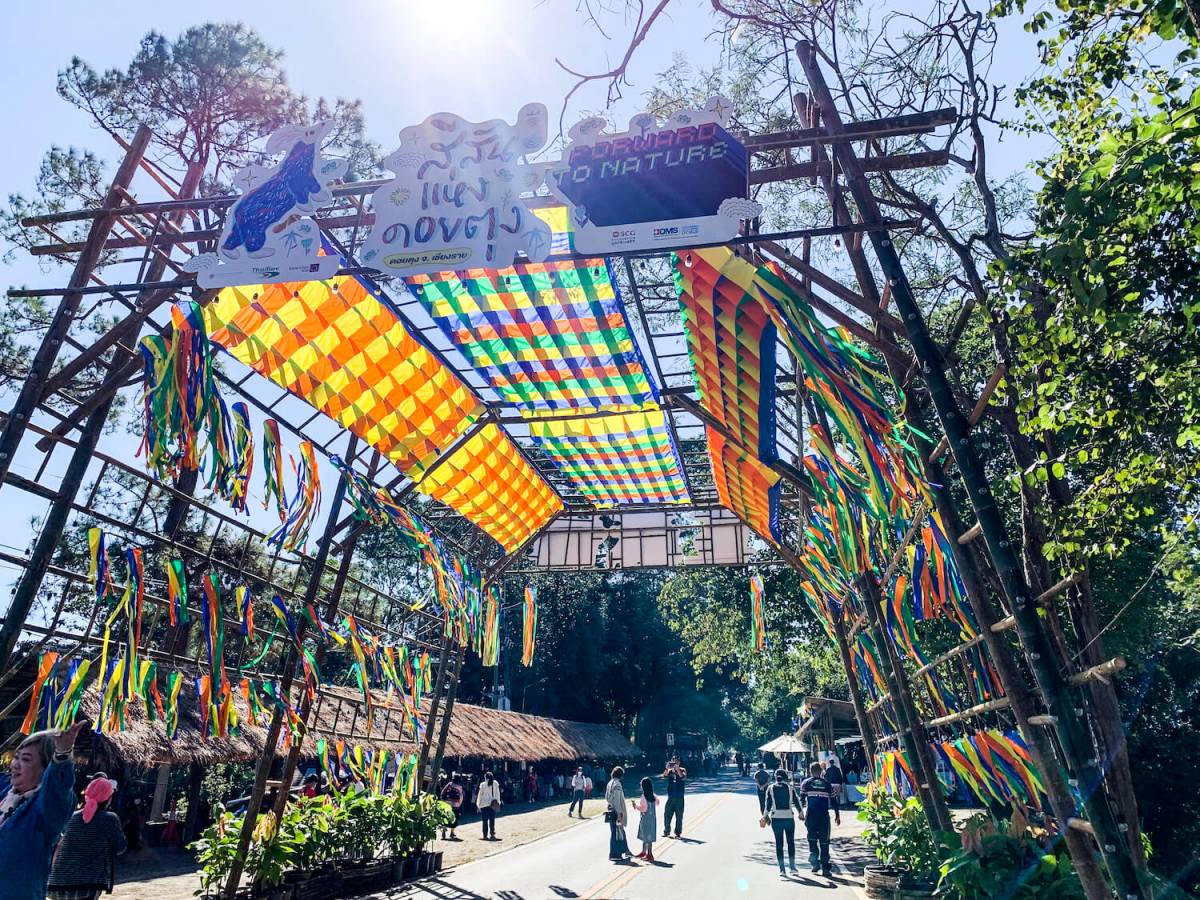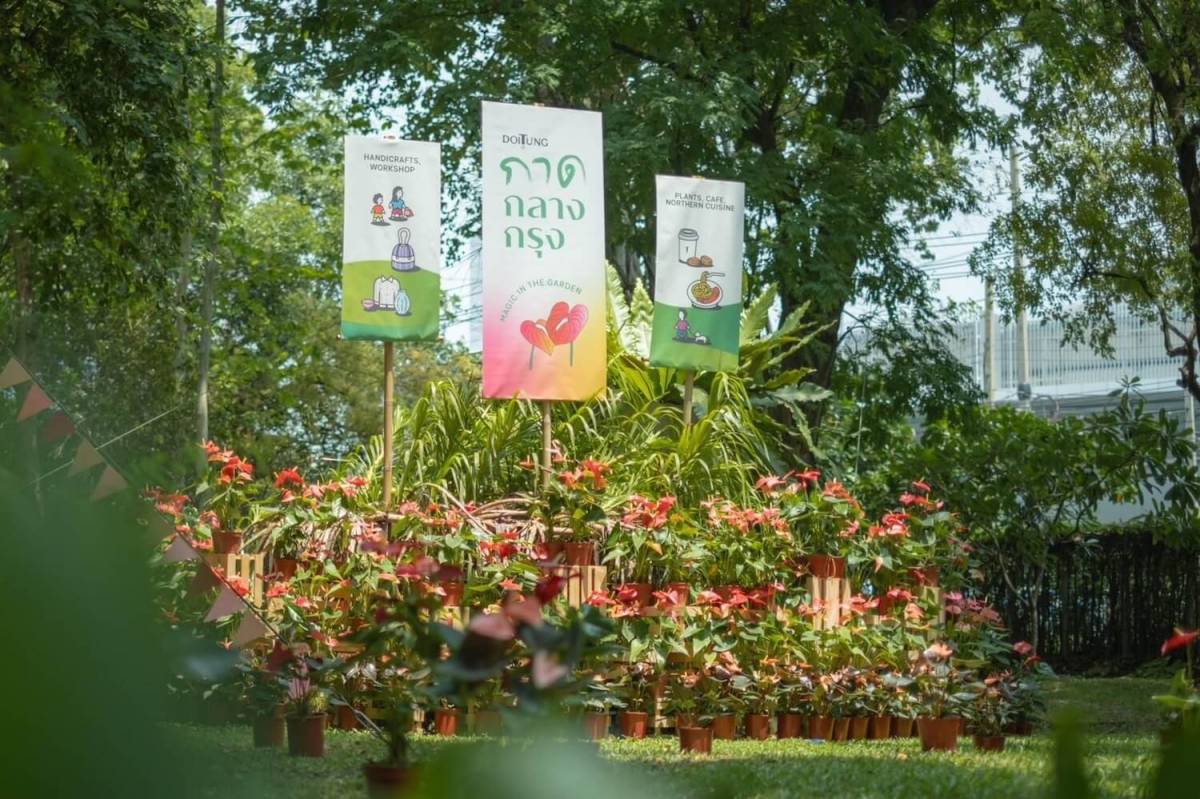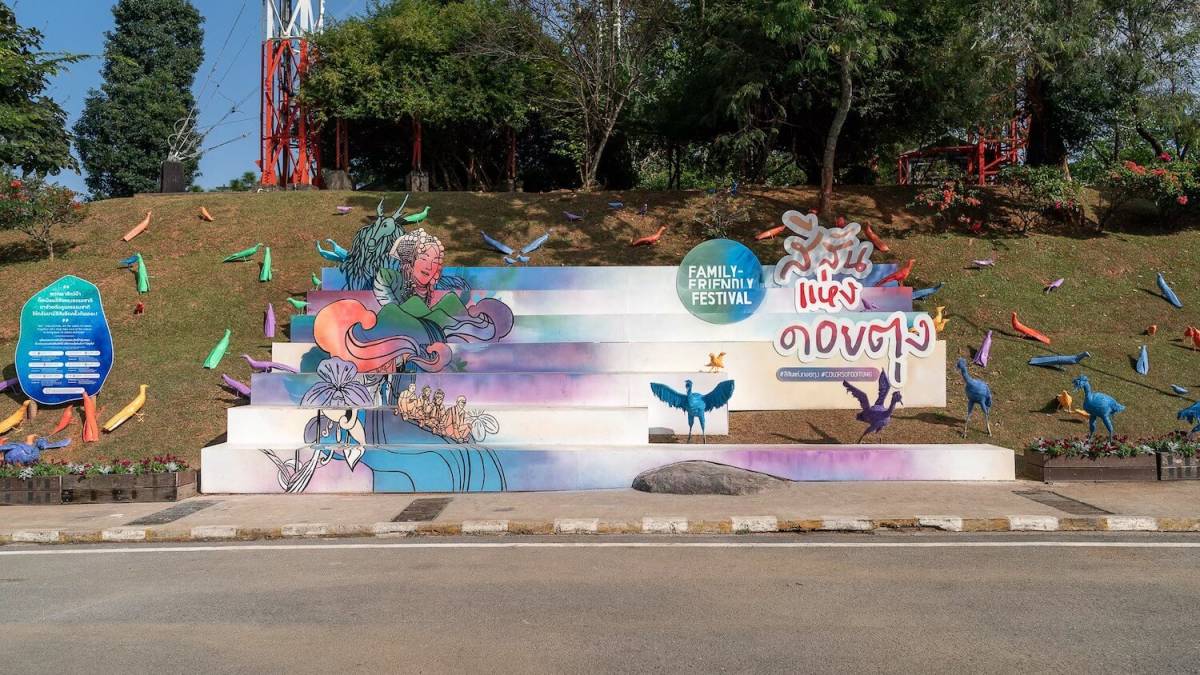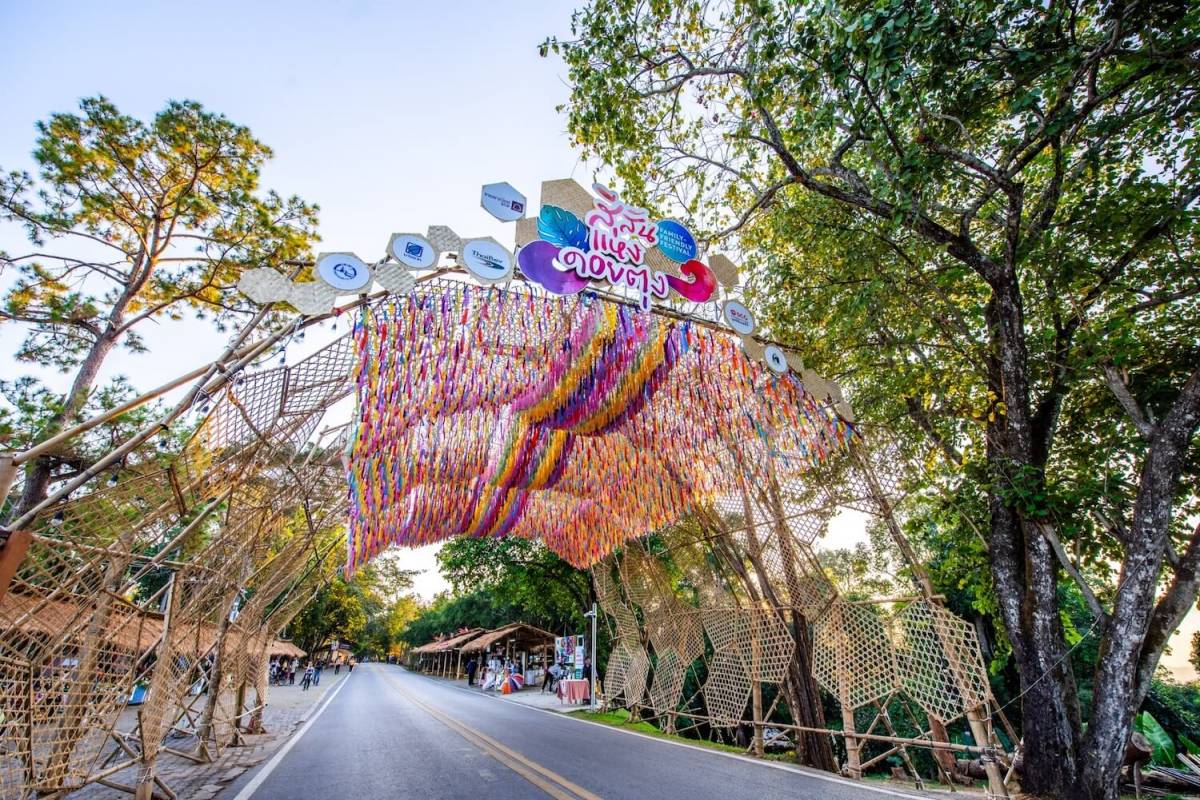admin
Key Success Factors For Sustainable Development
Sustainable Event
The Mae Fah Luang Foundation under Royal Patronage (MFLF) provides services of event venues and organizes various events and functions; for example, study visits, general visits, tourism activities, and youth initiatives. The MFLF’s goal is to sustainably organize events to ensure the community and nature thrive together while achieving economic, social, and environmental balance in accordance with global sustainable development trends. The MFLF therefore establishes policies for sustainable event organization as follows:
The Mae Fah Luang Foundation under Royal Patronage is dedicated to organizing events based on sustainability principles to create positive impacts on the economy, society, and environment, and not burden future generations. This encompasses organizations, communities, and all relevant stakeholders.
Article: How does carbon credit stop poverty and agricultural land conversion?
Image: Mae Fah Luang Foundation
Article by
M.L. Dispanadda Diskul, Chief Executive Officer
and Supatchaya Techachuchucherd, Environmental Project Manager
Mae Fah Luang Foundation under Royal Patronage
- Climate change, poverty, and agricultural land conversion are intrinsically linked, and forest protection is vital to prevent biodiversity loss.
- Between 2001 and 2019, Southeast Asia suffered forest loss of 610,000 km2 – an area greater than Thailand.
- The Mae Fa Luang Foundation’s project covers 49 communities across Thailand and protects 160,000 hectares of forest against wildfires.
Agricultural land conversion is a major threat to forest loss and places severe pressure on climate and biodiversity. In Southeast Asia, we witnessed forest loss of 610,000 km2 – an area greater than Thailand – between 2001 and 2019. So too, increasing temperatures, droughts, and unpredicted rainfalls lead to lower crop yield, pushing farmers to expand their agricultural land for survival. Climate change could lead to a loss of 4% of global annual economic output by 2050.
Since 2020, Nature-based Solutions (NbS) and actions to protect, sustainably manage, or restore natural ecosystems in Thailand have been in the spotlight for the various co-benefits they bring. Applying NbS to stop agriculture land conversion requires multi-stakeholders’ engagement such as government, technical experts and academia in forestry, private sector, and local communities. Yet, due to fragmented regulation and a lack of real-doers on the ground, bringing them to the cooperation table is a giant obstacle.
Thailand’s Community Forest Model – A thriving forest means a thriving community
To convert land use for agricultural production into forest protection, stable sources of income should be in place for the community. A carbon credit scheme could be a tool to engage communities in a sustainable forest protection policy. The Carbon Credit from Community Forests for Sustainability project by the Mae Fah Luang Foundation and its partners illustrated this possibility.
The undertaking bridges cooperation from government entities to authorize land use for the REDD+ project, private sectors to fund the project, and the community to spearhead the implementation. The initiative supports communities in validating and verifying carbon credit and earning income from selling carbon credit. In lieu of only buying the credit, private donors support funding for livelihood development activities and forest management, providing additional income, and incubating local business initiatives.
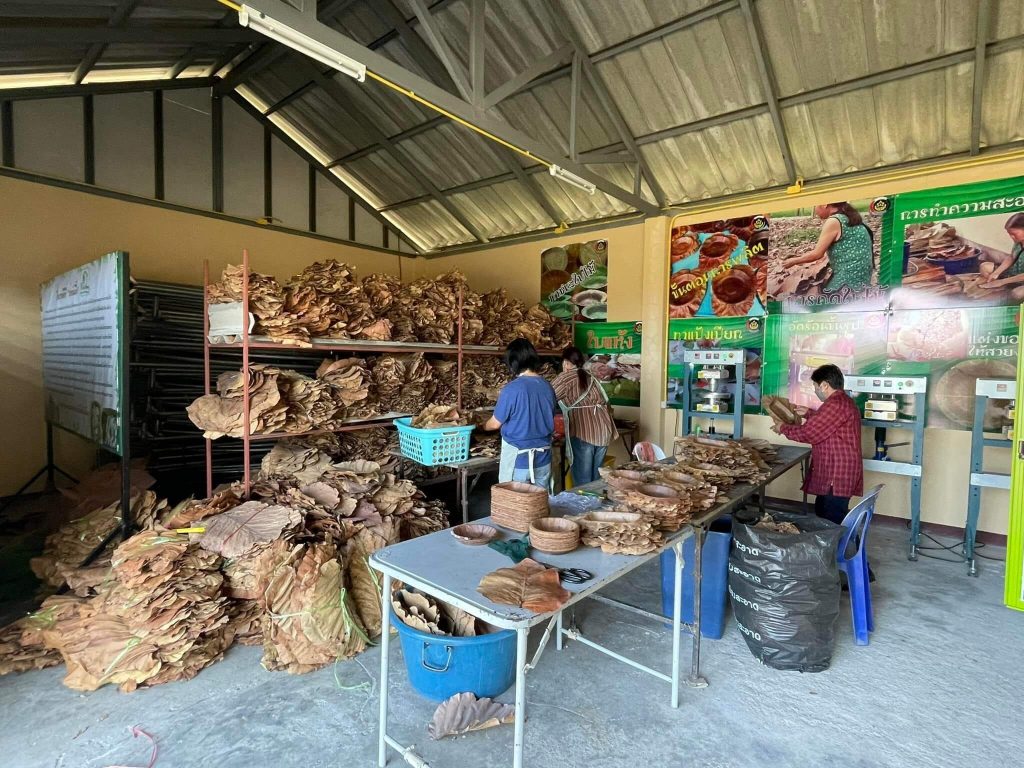
Image: Mae Fah Luang Foundation
For example, in its initial phase in 2020, the 157-hectare Doi Saket community forest complex received a total funding of $294,900. Ton Phueng village is one of the Doi Saket complexes that use a livelihood development fund to establish a local enterprise producing eco-friendly packaging from dry leaves, effectively reducing wildfire fuels. This business generates an average of $8,500 annually, is partaken by community members of all ages, and promotes Ton Phueng village’s Social Return on Investment (SROI), which is currently at 1.26.
The forest management fund also helped establish fire break and patrolling, which decreased wildfire burn areas from 742 to 368 hectares between 2020 and 2021. This year, fires only covered 196 hectares of land, marking a dramatic reduction of 17.24% after two years of operation.
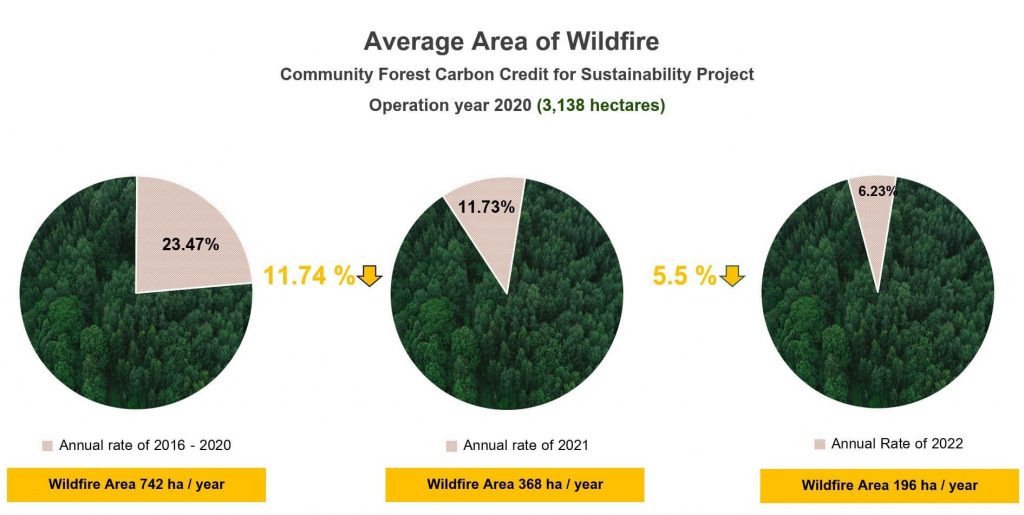
The Mae Fa Luang project covers 49 communities and more than 8,000 hectares nationwide. The Foundation and its partners aim to scale its forest protection – covering 160,000 hectares of forest – as a carbon sink, to engage over 1,100 communities and sequester an estimated 300,000-500,000 tons of carbon dioxide annually.
Biodiversity loss: A critical point
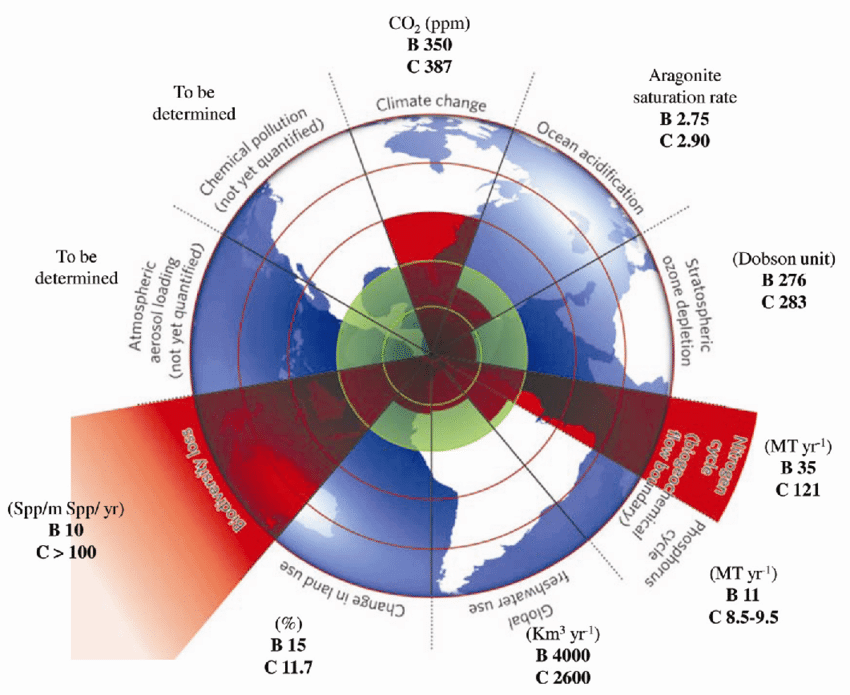
Image: JS Singh
Compared to reforestation or the renewable energy sector, forest protection doesn’t generate much carbon credit; however, protecting forests provides biodiversity co-benefits. Biodiversity is essential to support all life on Earth. Without a wide range of animals, plants, and microorganisms, we cannot have healthy ecosystems to provide us with the air we breathe and the food we eat.
Planetary Boundaries indicate that biodiversity loss is far more severe than climate change, while land use change is the primary cause of biodiversity loss. The right incentive for people to stop encroaching on forests and extending agricultural land is urgent. Although the afforestation project is increasing the green area significantly, the REDD+ project could protect the existing forests and our remaining biodiversity. Once these are lost, it could take an average of 120 years to recover.
Biodiversity prevails through carbon credit
The lack of global solidarity towards the climate ambition of 1.5°C affects not only humans’ way of life and our future but the whole biosphere. Conserving nature and creating more income for people who live in forests are seen as solutions in the opposite direction. With sound project planning and implementation, awareness from all stakeholders, and people-centric activity, carbon credit could be an effective tool to protect nature while developing the community’s livelihood. Through this endeavour, biodiversity might prevail with us.
This article is part of the World Economic Forum 2023 annual meeting held from 16-20 January 2023 in Davos, Switzerland under the theme “Cooperation in a Fragmented World”. With an important agenda on how to deal with the problem of global turbulence. Through economic restructuring that is linked to the burning of non-renewable fossil fuels for clean, sustainable energy. Which is a continuation of the 2022 conference (uploaded on www.weforum.org which is the official website of the World Economic Forum : https://bit.ly/3WtgYqL)
Carbon Credit from Community Forests for Sustainability
Basic Information
Overview
Initiated in 2021, the “Carbon Credit from Community Forests for Sustainability” project is a public-private partnership with the Mae Fah Luang Foundation under Royal Patronage (MFLF) being the project implementor. The project partners are the Ministry of Natural Resources and Environment, the Royal Forestry Department, Thailand Greenhouse Gas Management Organisation (TGO), Geo-Informatics and Space Technology Development Agency (GISTDA), Siam Commercial Bank PCL., QTC Energy PCL., TMT Steel PCL., PricewaterhouseCoopers ABAS Ltd., Intouch Holding PCL., and the Securities and Exchange Commission (SEC), Thailand. The Project aims to tackle the climate crisis and incentivize local communities to protect the forest, including wildfire prevention which caused smog and small particle dust (PM2.5).
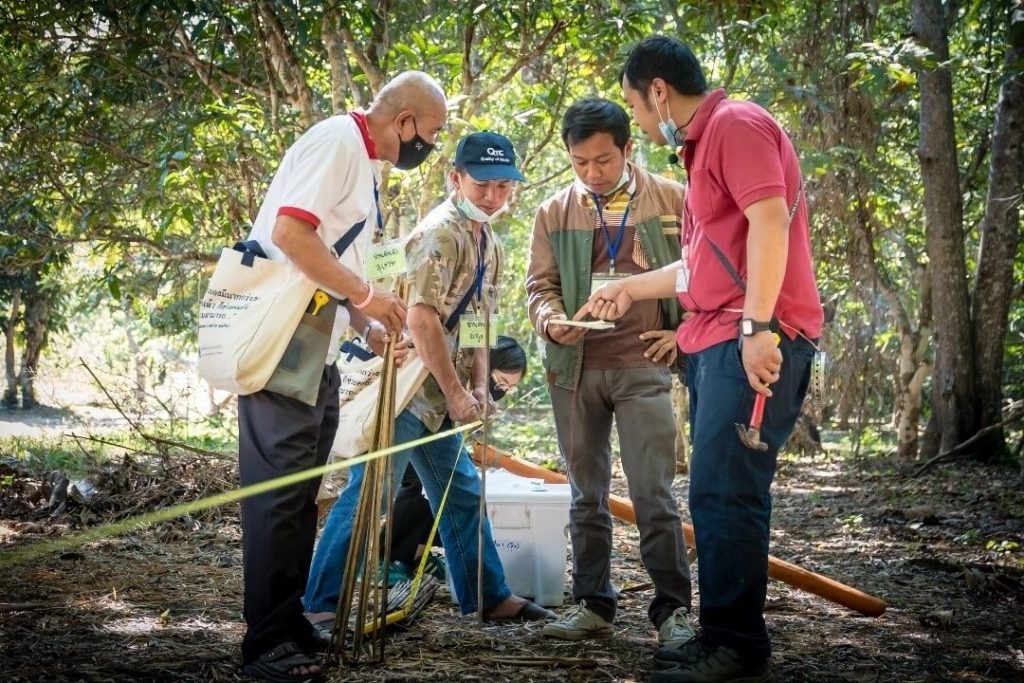
The “Carbon Credit from Community Forests for Sustainability” project is originated from the importance of “carbon credit” in agricultural and forest sectors where trees sequestrate and store carbon dioxide. In Thailand, local communities have protected their forests very well, while the private sector aims to reduce their organisation’s carbon footprint. The Mae Fah Luang Foundation sees the opportunity to connect the former and the latter—a “win-win” situation for both parties while reducing greenhouse gas emissions in the long run.
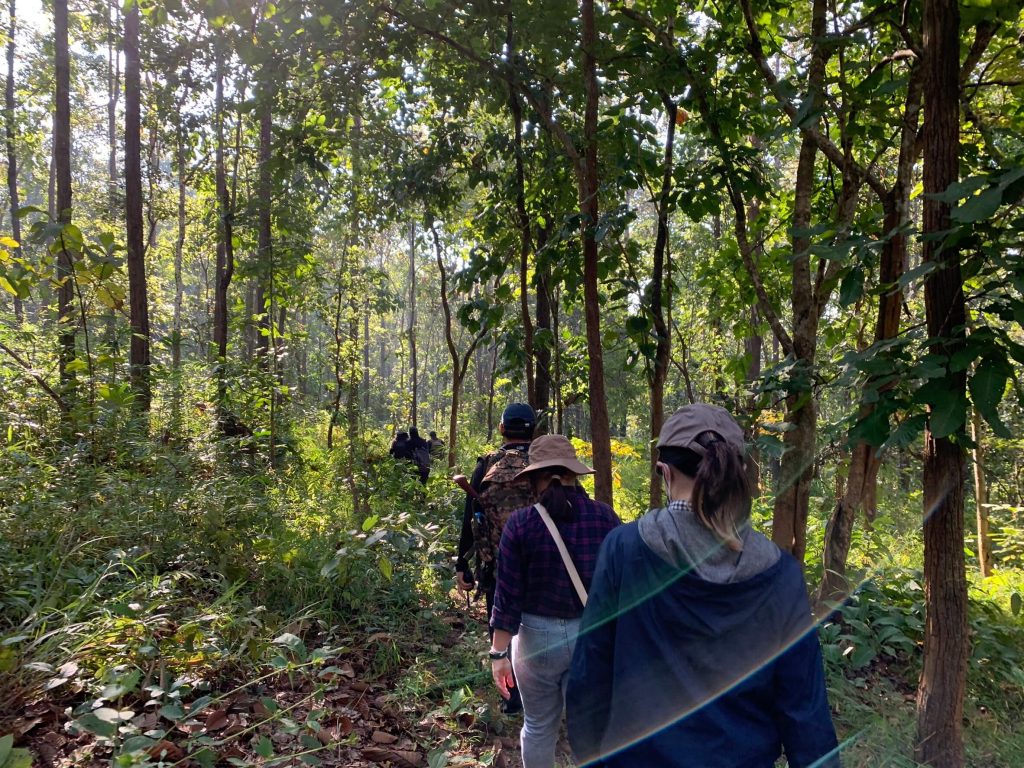
The Mae Fah Luang Foundation has more than 30 years of experience in reviving conservation forests—from forest survey, carbon sequestration assessment, to development activities allowing the community to co-exist with the forest. The Foundation empowers local communities to collect carbon sequestration to registered as part of Thailand Voluntary Emission Reduction Project (T-VER). In return for providing the budget for measuring greenhouse gasses (GHG) sequestration of the forest, verifying, and registering for the project, the corporate donors will receive carbon credit to offset the organisation’s footprint. The private partners also sponsor village development funds to improve the communities’ quality of life while protecting the forest.
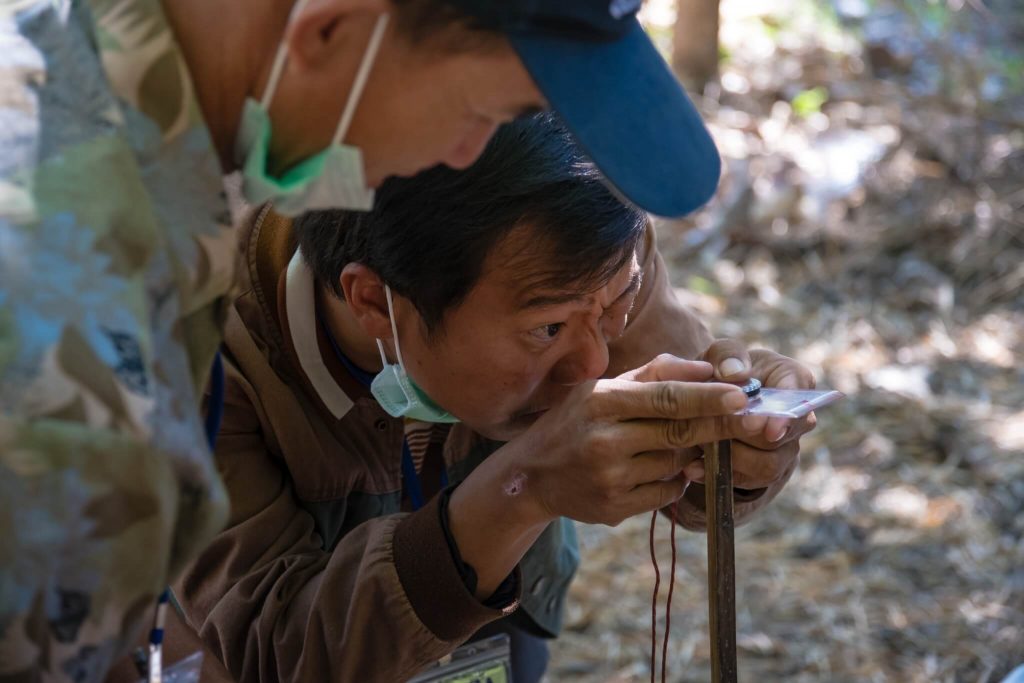
The “Carbon Credit from Community Forests for Sustainability” project is an application of the Mae Fah Luang Foundation’s principle to “Cultivate Land, Cultivate People”. The Foundation emphasises a participatory approach to engage the community from the start and throughout the development process. Once the forest is restored and can generate income for the community, it is seen as their valuable asset and therefore preserved.
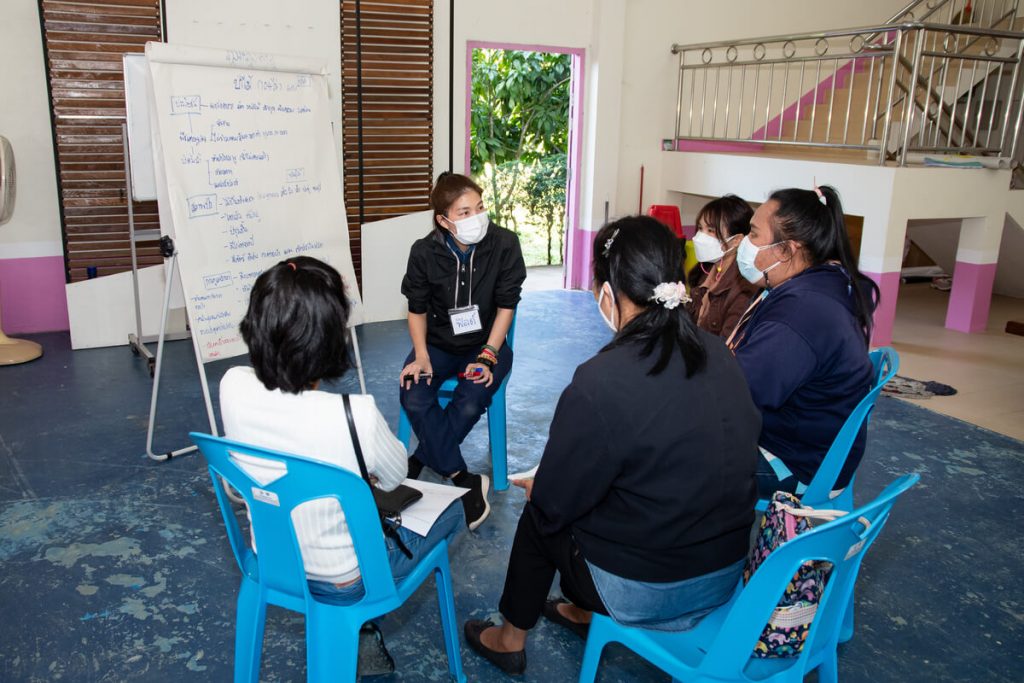
In 2023, the Mae Fah Luang Foundation partners with the public and private sectors, as well as communities in Thailand to extend the project area covering forests of more than 23,526 hectares in 120 communities to sustainably respond to the climate crisis.
